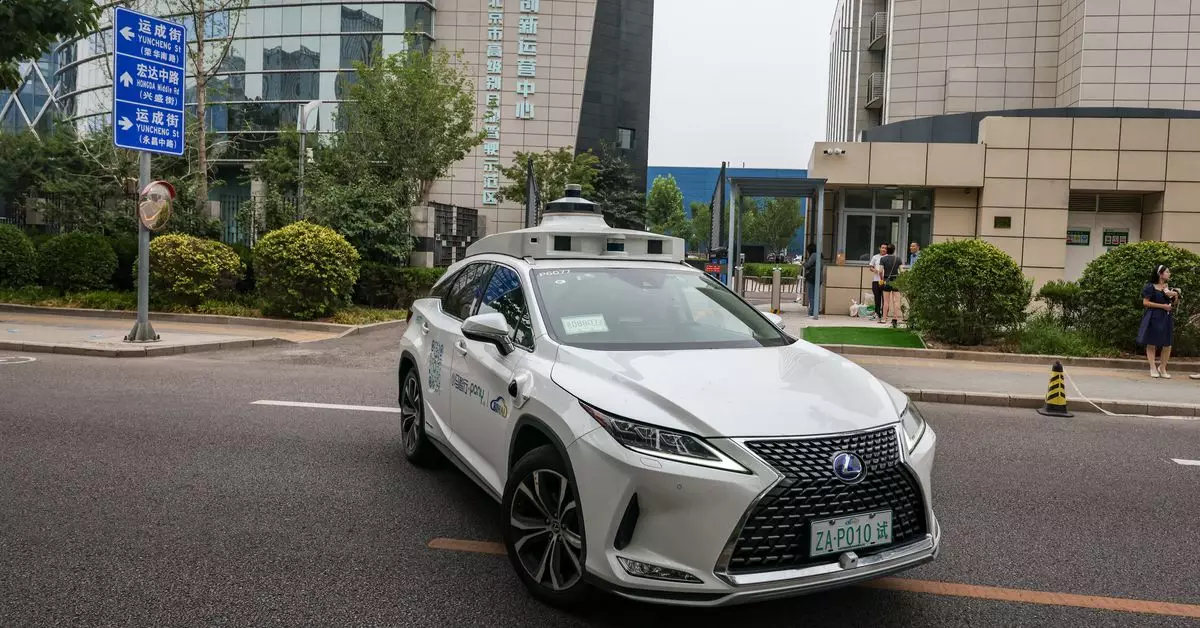The automotive industry stands at a significant crossroads, particularly in the burgeoning sector of autonomous vehicles (AVs). As countries like China aggressively ramp up their efforts toward widespread robotaxi adoption, the United States appears to be taking a more cautious approach. This divergence highlights not just differences in business strategies, but also in regulatory frameworks, technological investments, and market forecasts.
A recent analysis encapsulated by events unfolding at General Motors and Pony.ai reveals this divide. While GM announced it would halt financial support for its struggling robotaxi initiative, Cruise, Pony.ai breathes life into its operations with plans to expand its fleet significantly. This juxtaposition starkly illustrates how contrasting government policies, investor sentiment, and market viability can lead two nations down very different paths in the race for autonomous innovation.
China’s approach to developing autonomous vehicles is characterized by several key elements—government support, a large manufacturing base, and a more permissive regulatory environment. The partnership between Pony.ai and GAC Aion, along with a notable increase in fleet size from 250 to 1,000 vehicles by 2025, demonstrates how a collaborative mindset fuels rapid technological advancement.
One of the standout aspects of Pony.ai’s strategy is their daily average of 15 rides per vehicle, accumulating over 26,000 rides weekly. Such performance not only underlines the growing acceptance of autonomous transport among consumers but also emphasizes the scalability of operations that is increasingly vital for profitability in the AV sector. This large-scale deployment is backed by affordable electric vehicle (EV) production domestically—a crucial factor in keeping operational costs manageable. Baidu, another significant player in China’s AV landscape, aims to reduce the cost per vehicle to around $30,000, further exemplifying a shared commitment to enhance affordability across the sector.
The US Market: A Landscape of Caution
In stark contrast, the US faces substantial hurdles as it navigates the complexities of AV development. The recent pullback from GM and Ford signifies a significant shift from once-ambitious plans to an uncertain future, concentrating instead on advanced driver-assistance technologies for personal vehicles. It appears the once-vibrant atmosphere surrounding robotaxi projects has turned apprehensive, potentially due to fears of regulatory impediments, safety concerns, and intense competition from international players.
Additionally, the US government’s increasing scrutiny of foreign technology—particularly from China—has led to heightened protective measures, such as blocking the sale of Chinese vehicle software under the guise of national security. While such policies may aim to protect domestic interests, they could inadvertently impede the growth of local AV companies that are struggling to innovate amid regulatory uncertainties.
No major autonomous vehicle operator, whether in the US or globally, has yet achieved profitability. This reality underscores the precarious nature of the industry. Companies like Pony.ai have ambitious goals, but this risks being met with public skepticism, particularly in markets like the US where concerns about safety and liability are paramount. As public acceptance remains a critical factor for the success of robotaxi services, operational efficiency must pair with effective communication to build consumer confidence.
Moreover, investors are growing wary. Despite high expectations set during early funding rounds, Pony.ai’s IPO saw its value drop to $5.25 billion, reflecting broader market anxiety surrounding the sustainability of business models reliant on expensive technology and slow validation processes. With each passing year, the competition for dominance in the AV landscape is heating up, yet profitability remains elusive, highlighting a significant disconnect between ambition and financial reality.
Regulatory Challenges: A Stalemate in the US
Regulatory frameworks play a crucial role in the growth of autonomous vehicles. Despite advancements made by China, the US legislative environment has been mired in stagnation for over six years. Issues such as setting performance standards and liability for accidents remain contentious, complicating the deployment of AVs. Cities are also expressing concerns, notably around disruptions caused by robotaxi operations, as evidenced by San Francisco’s local protests.
In the backdrop, the discussion around developing a federal framework for self-driving cars may provide some clarity, but the systematic distrust among states and local authorities regarding the implications of such vehicles complicates progress. Without a uniform set of guidelines, the possibility of widespread deployment remains uncertain.
The shifting trajectories of the US and Chinese autonomous vehicle landscapes serve to underscore critical lessons about the importance of teamwork between government, industry, and consumers. As China continues to forge ahead with supportive policies and strategic partnerships, the US faces mounting pressure to clarify its regulatory stance and reinvigorate innovation. The stakes are high; the world is watching closely to see who will lead the charge into the era of autonomous transport.

